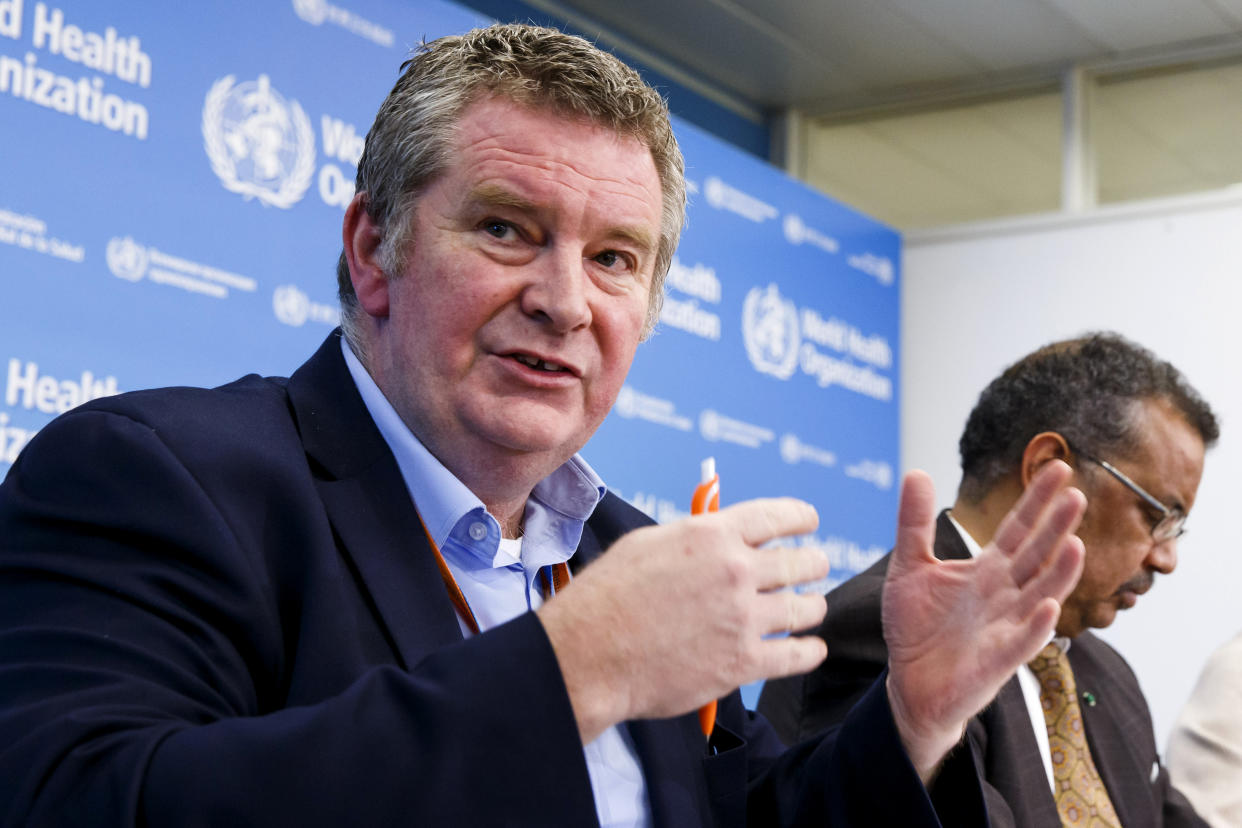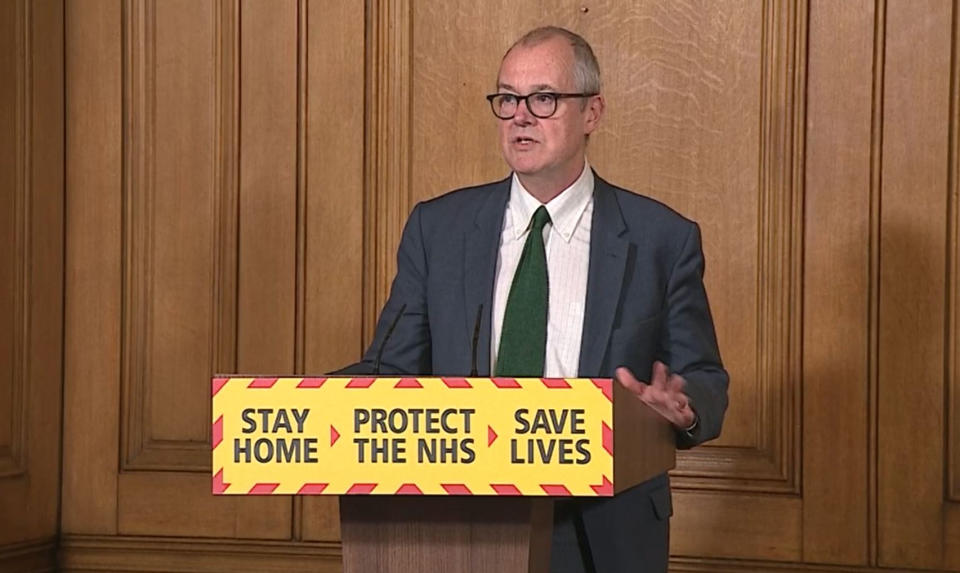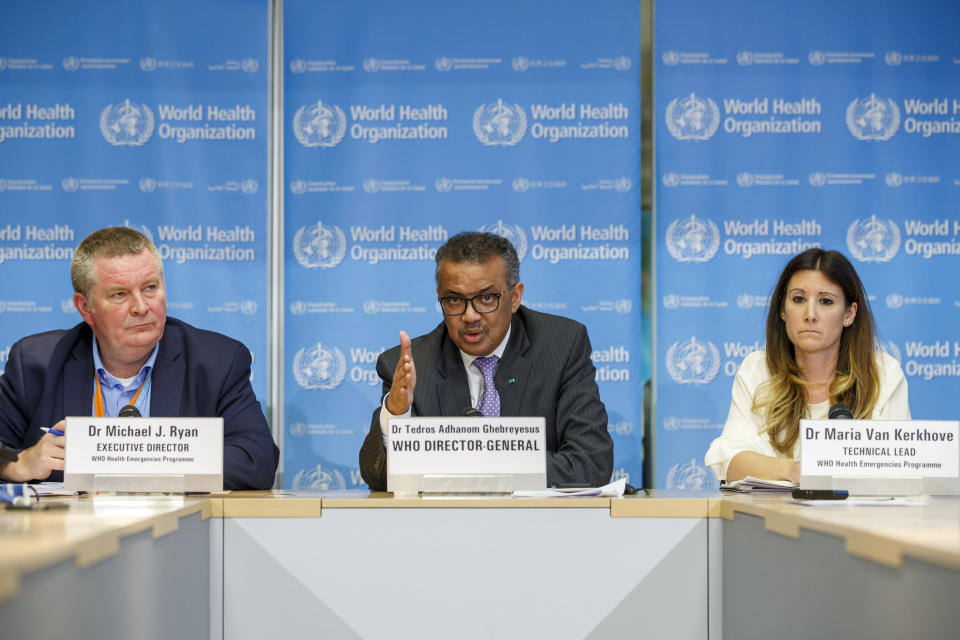Coronavirus: Number of people infected probably much lower than first thought, WHO warns

Fewer people may have been infected with the coronavirus than expected, the World Health Organization (WHO) has said.
A larger amount of patients have also suffered a “significant” illness after being infected than previously thought, according to Dr Michael Ryan, executive director of the WHO Health Emergencies Programme.
COVID-19, the respiratory disease that can be caused by infection, has already killed at least 286,000 people, having infected 4.1 million based on official statistics, Johns Hopkins University data shows.
Dr Ryan said on Monday he was concerned by talk that tests in the future will show most people had been infected and the world could return to normal.
Clinical studies have actually shown the opposite, he insisted.
He told a briefing on Monday he was worried about “this narrative, there was an assumption as this disease spread around, that we are really just seeing the severe cases and the difficult cases”.
Latest coronavirus news, updates and advice
Live: Follow all the latest updates from the UK and around the world
Fact-checker: The number of COVID-19 cases in your local area
6 charts and maps that explain how coronavirus is spreading
“When the sero-epidemiology comes it will demonstrate that most of the people have been infected and this will all be over and we’ll go back to normal business.
“Well the preliminary results from the sero-epidemiologic studies are showing the opposite, it’s showing the proportion of people with significant clinical illness is actually a higher proportion of all those who’ve been infected.
“Because the number of people infected in the total population is probably much lower than we expected... that means we have a long way to go.”
Dr Ryan described COVID-19 as “public enemy number one”, and said the world needs to “recalculate” its view of the coronavirus as a mild illness.
He also took aim at notions of herd immunity, which was brought up by Sir Patrick Vallance, the government’s chief scientific advisor, in March.
Sir Patrick said that “because the vast majority of people get a mild illness, (the government’s aim is) to build up some kind of herd immunity so more people are immune to this disease and we reduce the transmission, at the same time we protect those who are most vulnerable to it”.
But it was later denied by health secretary Matt Hancock that herd immunity was part of the strategy, after it caused controversy.
Herd immunity happens when enough of the population is immune to a disease, typically through vaccination, that those who cannot be immunised are protected because enough people have resistance and stop the disease transmitting to those vulnerable people.
Ultimately, ministers decided to put the country into lockdown with an Imperial College London study showing 250,000 deaths would take place without major restrictions on the population.


“Humans are not herds and as such the concept of herd immunity is generally reserved for calculating how many people would need to be vaccinated in a population in order to generate that same effect,” Dr Ryan said.
“So I think we need to be really careful when we use terms in this way around natural infections in humans because it can lead to a very brutal arithmetic which does not put people and life and suffering at the centre of that equation.”
Although Dr Ryan did not mention countries by name, Sweden has adopted a distinct approach compared to other countries, where it has introduced many forms of social distancing but not imposed a severe lockdown like the UK, France or Italy.
He said: “I do think this idea that maybe countries who had lax measures and haven’t done anything will all of a sudden magically reach some herd immunity, and “so what if we lose a few old people along the way”, this is a really dangerous, dangerous calculation, and not one I believe most member states are willing to make that arithmetic.
“Responsible member states will look at all their population, they value every member of their society, and they try to do everything possible to protect health while at the same time obviously protecting society, protecting economy, and other things.
“We need to get our priorities right as we enter the next phase of this fight.”

 Yahoo News
Yahoo News 

